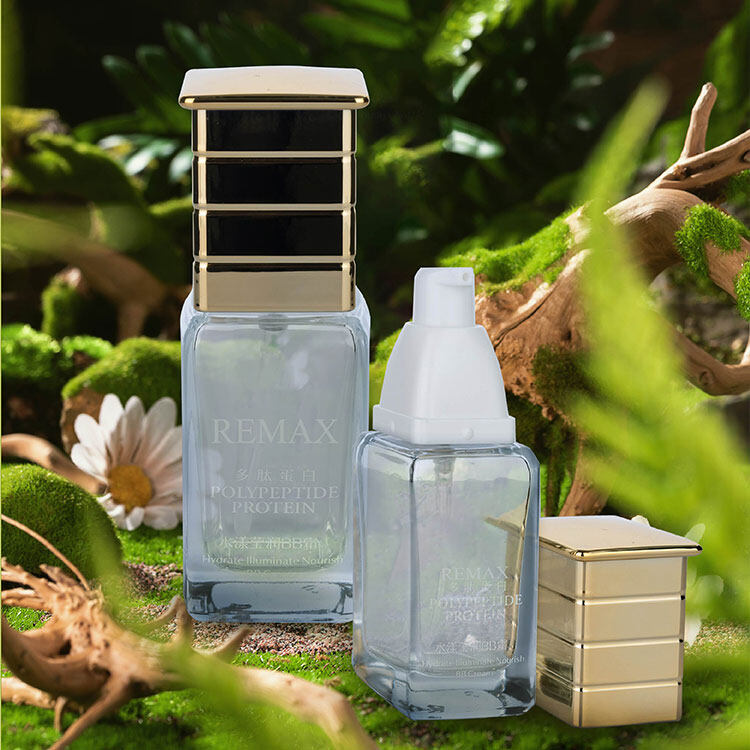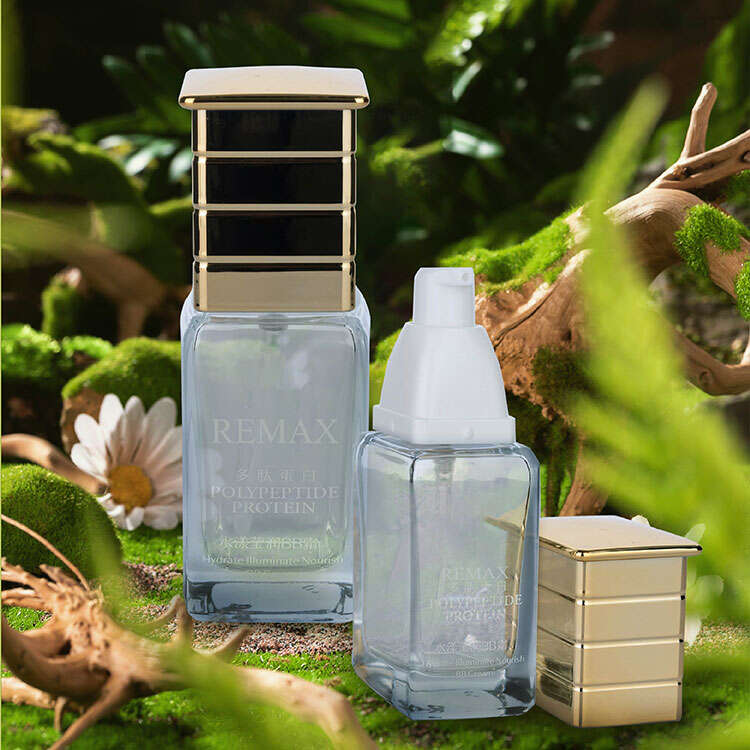Email format error
Email cannot be empty
Email already exists
6-20 characters(letters plus numbers only)
The password is inconsistent
Email format error
Email cannot be empty
Email does not exist
6-20 characters(letters plus numbers only)
The password is inconsistent

The lotion bottle industry has witnessed significant evolution over the past few years, largely driven by changing consumer preferences and advancements in material technology. One of the most notable trends is the increasing use of polyethylene (PE) materials in the production of lotion bottles. PE, known for its versatility, durability, and cost-effectiveness, has become a popular choice among manufacturers.
As consumers become more environmentally conscious, they are seeking products packaged in materials that are not only functional but also sustainable. PE lotion bottles are increasingly favored for their lightweight nature and recyclability. The global market for plastic bottles is projected to grow substantially, with PE holding a significant share due to its widespread use in personal care and cosmetic products.
Compared to alternative materials like glass and polyethylene terephthalate (PET), PE offers distinct advantages. For instance, PE bottles are less prone to breakage and can be produced at a lower cost, making them ideal for brands looking to optimize their supply chain without compromising on quality.
Consumer preferences are shifting toward sustainable and aesthetically pleasing packaging. Brands are responding by investing in design innovations that not only attract attention but also align with sustainability goals. Many consumers now actively seek out products in eco-friendly packaging, prompting brands to partner with PE lotion bottle suppliers that emphasize green practices.
The demand for refillable and recyclable packaging is rising, and PE lotion bottles are often designed with these considerations in mind. Additionally, customization options, including unique shapes and colors, have become increasingly popular, allowing brands to differentiate themselves in a crowded market.
Sustainability is no longer a mere trend; it is an essential aspect of business strategy in the lotion bottle industry. As consumers prioritize eco-friendly products, suppliers are adopting practices that minimize environmental impact.
Many PE lotion bottle suppliers are implementing eco-friendly manufacturing processes that reduce waste and energy consumption. For instance, some manufacturers are using recycled polyethylene (rPE) to produce new bottles. This practice not only conserves resources but also reduces the carbon footprint associated with new plastic production.
Moreover, suppliers are investing in energy-efficient machinery and technologies that lower energy usage during production. By adopting such practices, suppliers can not only appeal to environmentally conscious brands but also contribute to a more sustainable future.
Compliance with environmental regulations is becoming increasingly critical in the lotion bottle industry. Governments and regulatory bodies around the world are enacting stricter guidelines regarding packaging waste and plastic use. As a result, PE lotion bottle suppliers must stay informed about these regulations and ensure their products meet industry standards.
Suppliers that prioritize sustainability often seek certifications, such as ISO 14001, which demonstrates a commitment to environmental management. These certifications provide assurance to brands that they are partnering with suppliers who adhere to rigorous environmental standards.
When selecting a PE lotion bottle supplier, brands must consider several factors to ensure they choose the right partner for their needs. This section outlines key criteria for evaluating potential suppliers.
Quality assurance is a critical factor in the selection process for any supplier, especially in the cosmetic and personal care industry, where product safety and efficacy are paramount. Brands should look for suppliers that adhere to stringent quality standards, ensuring that PE lotion bottles are produced to meet or exceed industry requirements.
Key quality assurance measures for PE lotion bottles include compliance with FDA regulations and material safety standards. Suppliers should be able to provide documentation and certifications that demonstrate their commitment to quality, including details on the materials used and the testing processes they employ.
To ensure product quality, reputable suppliers conduct a variety of tests on their PE lotion bottles. These tests may include assessments of durability, leak-proof performance, and resistance to UV light. Additionally, certifications such as the FDA approval signify that the materials used in manufacturing are safe for contact with cosmetics and personal care products.
Brands should inquire about the specific testing processes a supplier implements and request evidence of successful testing outcomes. This level of due diligence helps mitigate the risks associated with product quality and ensures that the final products meet consumer expectations.
Cost-effectiveness is another essential consideration for brands when choosing a PE lotion bottle supplier. Pricing strategies can vary significantly among suppliers, so brands should evaluate potential partners based on their pricing models and overall value.
Some suppliers offer competitive pricing based on volume discounts, while others may have tiered pricing structures that reward larger orders. It’s crucial for brands to assess their expected order volume and negotiate pricing terms that align with their budget and production needs.
Beyond initial pricing, brands should evaluate the overall value for money offered by potential suppliers. This assessment includes considering factors such as product quality, delivery timelines, customer service, and additional services offered (e.g., design assistance, customization).
A supplier that offers a slightly higher price but provides exceptional quality and service may ultimately deliver better value than a low-cost alternative that compromises on quality. Brands should consider the total cost of ownership, including potential expenses related to returns, rework, or lost sales due to quality issues.
Understanding a supplier's production capacity is crucial for brands, particularly those that experience fluctuations in demand. Brands should evaluate suppliers based on their ability to meet order quantities within specified timelines.
Suppliers should provide information about their production capabilities, including the types of machinery used and the average lead times for various order sizes. Brands may also want to inquire about the supplier's history of meeting delivery deadlines, especially during peak demand periods.
As market demands evolve, brands must partner with suppliers that can adapt to changes in order size and frequency. A supplier’s flexibility to scale operations is a critical factor in ensuring that brands can respond quickly to market trends and consumer demands.
Some suppliers may offer scalability through modular manufacturing systems that allow for quick adjustments in production capacity. Others may have established relationships with subcontractors to handle increased demand. Brands should assess a supplier’s ability to accommodate sudden spikes in demand without compromising quality or delivery schedules.
Understanding the manufacturing process of PE lotion bottles is essential for brands looking to partner with reliable suppliers. This section provides an overview of the production techniques and technological innovations shaping the industry.
The manufacturing of PE lotion bottles involves several techniques, with injection molding and blow molding being the most common methods.
Injection Molding: This technique involves injecting molten polyethylene into a mold to create the desired bottle shape. It allows for high precision and uniformity in bottle production, making it ideal for larger quantities.
Blow Molding: In blow molding, a pre-formed tube of polyethylene is heated and then inflated within a mold to form the bottle shape. This technique is often used for creating hollow bottles and is particularly advantageous for producing lightweight containers.
These manufacturing processes are complemented by various finishing techniques, including labeling, printing, and surface treatments, which enhance the product's appeal.
The selection of the right type of polyethylene is crucial in the manufacturing of lotion bottles. There are different grades of PE, including low-density polyethylene (LDPE) and high-density polyethylene (HDPE), each offering unique properties suitable for specific applications.
Suppliers should be knowledgeable about the various types of polyethylene available and the specific benefits they offer in the context of lotion bottle production. Brands should collaborate closely with their suppliers to determine the best material for their product line.
Technological innovations play a pivotal role in enhancing the efficiency and effectiveness of PE lotion bottle manufacturing. Automation is becoming increasingly common in production lines, allowing for faster production speeds and reduced labor costs.
Robotics and advanced machinery enable manufacturers to achieve higher precision and consistency in bottle production. Additionally, digital monitoring systems are being implemented to track production processes, identify inefficiencies, and maintain quality control.
These advancements not only improve productivity but also contribute to reducing waste and environmental impact, aligning with the sustainability goals many brands pursue.
In response to growing environmental concerns, many PE lotion bottle suppliers are adopting sustainable innovations in their production processes. For example, some manufacturers are incorporating renewable energy sources, such as solar or wind power, into their operations.
Moreover, advancements in biodegradable materials and bioplastics are gaining traction, presenting alternative options for brands looking to reduce their reliance on traditional plastics.
Suppliers that are early adopters of such innovations can offer brands a competitive edge in the market, appealing to environmentally conscious consumers and enhancing brand reputation.
In conclusion, the landscape of PE lotion bottle suppliers is rapidly evolving, influenced by market trends, consumer preferences, and advancements in sustainability practices. Brands must prioritize quality assurance, cost-effectiveness, capacity, and scalability when selecting a supplier. Understanding the manufacturing process, including production techniques and technological innovations, is also essential for making informed decisions.
As the demand for eco-friendly and aesthetically appealing packaging continues to grow, PE lotion bottle suppliers that embrace sustainability and innovation will position themselves favorably in the marketplace. By partnering with the right suppliers, brands can not only meet consumer expectations but also contribute to a more sustainable future.
With these insights, brands can navigate the complexities of selecting a PE lotion bottle supplier, ensuring they choose a partner that aligns with their values and goals while providing high-quality, sustainable packaging solutions.